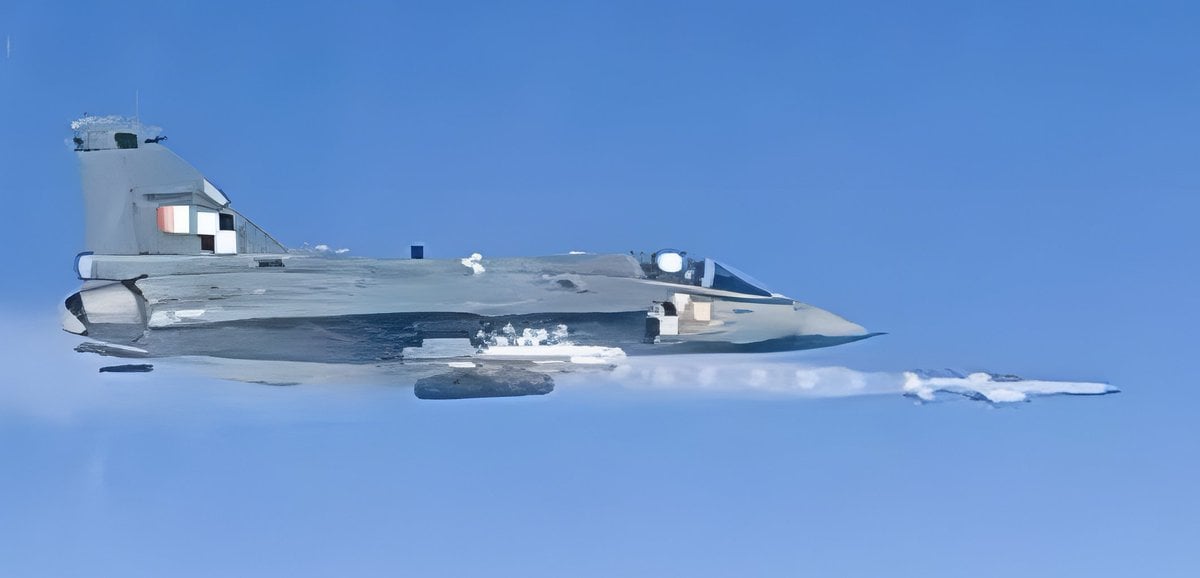SOURCE: RAUNAK KUNDE / NEWS BEAT / IDRW.ORG

The Indian Air Force (IAF) has significantly strengthened its Beyond Visual Range Air-to-Air Missile (BVRAAM) inventory, positioning itself as a formidable aerial power in South Asia amid rising tensions with Pakistan and China. As of April 2025, the IAF’s stockpile includes 250 Meteor missiles acquired through the Rafale deal, a fresh order of 400 R-77 missiles, 400 indigenous Astra Mk1 BVRAAMs, over 500 R-77s from previous stocks, and an undisclosed number of MICA-IR and MICA-RF missiles procured for the Mirage-2000 and Rafale fleets. This robust arsenal, detailed in recent defense updates, underscores the IAF’s focus on maintaining air superiority as it prepares for potential conflicts along its contested borders.
The Meteor missile, integrated with the IAF’s 36 Rafale jets, is a game-changer. With a range exceeding 150 km (some estimates suggest up to 200 km), the Meteor’s ramjet propulsion and active radar seeker enable it to engage targets at extreme distances with a “no-escape zone” of over 60 km—three times that of the AIM-120 AMRAAM used by Pakistan’s F-16s. The 250 Meteors, delivered as part of the ?63,000 crore Rafale deal signed in 2016, give the IAF a decisive edge in beyond-visual-range (BVR) combat, particularly against China’s J-20, which relies on the PL-15 with a comparable 200 km range but lacks the Meteor’s sustained maneuverability.
Complementing the Meteor are the R-77 missiles, primarily equipping the IAF’s Su-30MKI and MiG-29 fleets. The IAF’s existing stock of over 500 R-77s, procured since the early 2000s, has been bolstered by a new order of 400 units, ensuring compatibility with its 272 Su-30MKIs—the backbone of its fighter fleet. The R-77, with a range of 110 km and an active radar seeker, provides reliable BVR capability, though it is outclassed by newer missiles like the Meteor and PL-15. The additional order, likely placed to counter supply chain disruptions following Western sanctions on Russia post-2022, reflects the IAF’s pragmatic approach to maintaining operational readiness despite geopolitical constraints.
The indigenous Astra Mk1 BVRAAM, with 400 units on order, marks a significant step toward self-reliance. Developed by DRDO, the Astra Mk1 has a range of 90-110 km, an active radar seeker, and mid-course updates via data links, making it comparable to the R-77. Integrated with the Su-30MKI and Tejas Mk1, and with trials underway for the Mirage-2000, the Astra Mk1 enhances the IAF’s flexibility while reducing dependency on foreign suppliers. The missile’s production, handled by Bharat Dynamics Limited (BDL), aligns with the “Make in India” initiative, though concerns linger about BDL’s capacity to deliver on time, given past delays with Astra batches.
The IAF’s Mirage-2000 and Rafale fleets also carry MICA-IR (infrared-guided) and MICA-RF (radar-guided) missiles, procured in the early 2000s for the Mirage-2000 and as part of the Rafale deal. The MICA, with a 60 km range, offers versatility through its dual-guidance system, allowing “fire-and-forget” engagements and effectiveness in electronic countermeasures (ECM) environments. While exact numbers are classified, the IAF likely holds several hundred MICAs, ensuring its 50 Mirage-2000s and 36 Rafales remain lethal in both BVR and within-visual-range (WVR) combat. The MICA’s shorter range compared to the Meteor is offset by its proven reliability, as demonstrated during the 2019 Balakot airstrike when Mirage-2000s successfully evaded Pakistani defenses.
This diverse BVRAAM inventory—totaling over 1,550 missiles (250 Meteors, 900+ R-77s, 400 Astra Mk1s, and several hundred MICAs)—gives the IAF unparalleled flexibility to counter regional threats. Pakistan’s F-16s, armed with AIM-120C AMRAAMs (120 km range), and China’s J-20s with PL-15s pose significant challenges, but the IAF’s mix of long-range Meteors, reliable R-77s, and cost-effective Astras allows it to tailor its response to different threats. The Rafale’s SPECTRA electronic warfare suite, paired with the Meteor, provides a first-shot advantage, while the Su-30MKI’s numbers and Astra integration enable sustained engagements. The Mirage-2000, despite its age, remains a potent platform with MICA missiles, especially for precision strikes.
NOTE: Article cannot be reproduced without written permission of idrw.org in any form even for YouTube Videos to avoid Copy right strikes. Websites doing illegal reproductions will get DMCA and Legal Notices.